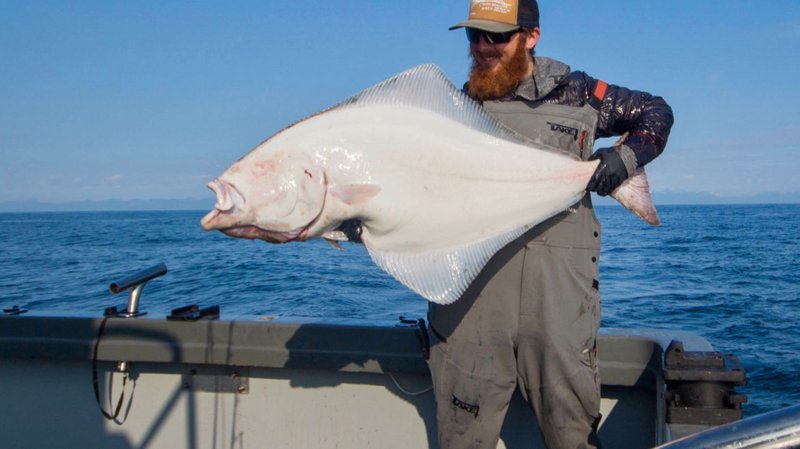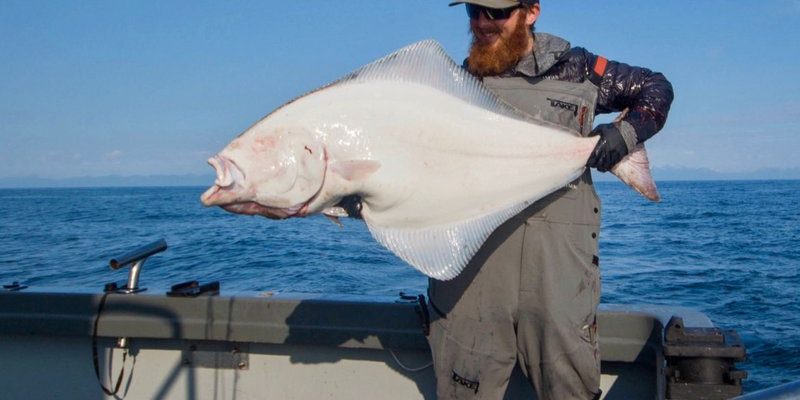
So, what exactly does the halibut eat? And how does it hunt? These questions are common for anyone curious about this unique fish. Just like our own eating habits can reflect our surroundings, the halibut’s diet showcases the rich ecosystem of the ocean. Let’s dive deeper into the halibut’s culinary world and see what goes on beneath the waves.
Understanding Halibut Species
Before delving into the halibut’s diet, it’s important to know that there are two main species: the Pacific halibut and the Atlantic halibut. While they share similar habits, their environments can influence what they munch on. The Pacific halibut, often found in the North Pacific, is the larger of the two, reaching over 400 pounds. Meanwhile, the Atlantic halibut can also grow quite large but is now less common due to overfishing.
These species adapt their diets based on what’s available in their respective habitats. For instance, the Pacific halibut often enjoys a diet rich in fish and crustaceans, while the Atlantic halibut has a broader palate. Understanding these distinctions can help you grasp just how unique and adaptable these fish really are.
The Halibut’s Natural Habitat
Halibut generally prefer the cold, deep waters of the ocean, often residing on the ocean floor’s sandy or muddy substrates. You can find them at depths of up to 3,600 feet, though they’re most active in shallower waters. This is where the hunt for food begins. Think of the ocean floor as their dining room, with plenty of hiding spots and plenty of food options.
In these depths, light diminishes, and the halibut primarily uses its keen sense of smell to detect prey. This ability, combined with its flat body allowing it to blend into the ocean floor, makes it a stealthy hunter. Picture it like a skilled magician—one moment it’s invisible, and the next, it’s striking for its meal!
Main Components of the Halibut Diet
So, what’s on the halibut’s menu? Halibuts are opportunistic feeders, which means they’ll eat whatever is readily available. Their diet consists mainly of:
- Fish: They love to snack on smaller fish like flounder, mackerel, and even juvenile cod.
- Crustaceans: Shrimp, crabs, and other shellfish are like fine dining for them.
- Cephalopods: They’ll also go for squid and octopus when the opportunity arises.
This variety ensures that they get a wide range of nutrients. It’s like having a well-rounded diet filled with proteins, vitamins, and minerals—essential for maintaining their health and energy as they swim through the ocean.
How Halibut Hunt for Food
Halibut use a combination of stealth and strategy when it comes to hunting. They often lie still on the ocean floor, camouflaged by their environment, waiting for potential prey to swim by. When they spot a meal, they can launch themselves quickly, using their massive bodies to engulf their target.
Imagine a cat pouncing on unsuspecting prey; it’s about being patient and striking at just the right moment. This ambush tactic is crucial for the halibut, allowing it to catch its preferred meals without wasting too much energy.
Feeding Behavior and Patterns
Halibut have different feeding behaviors based on the time of year and their life stage. Young halibut typically feed more on smaller invertebrates and gradually transition to a diet that includes larger fish as they grow.
Interestingly, their feeding patterns can vary with the seasons. For instance, during the spawning season, halibut might not feed as aggressively, focusing instead on reproduction. Outside of this time, they’ll hunt actively, often during the night when many of their prey come out. This nocturnal feeding behavior keeps them well-fed and helps them avoid larger predators.
Impact of Diet on Halibut Growth
The halibut’s diet significantly impacts its growth and overall health. A plentiful supply of nutrients allows these fish to thrive, growing larger and stronger. For commercial fishers, understanding the halibut’s feeding habits is crucial, as it influences where and when to catch them.
In areas where the ecosystem is rich, halibuts can grow to impressive sizes. Conversely, overfishing and environmental changes can disrupt their food sources, leading to poor growth rates. This highlights the importance of sustainable fishing practices to protect halibut populations and their habitats.
The Importance of Sustainable Fishing
Given the halibut’s role in the ecosystem and its popularity as a food source, sustainable fishing practices are more important than ever. Overfishing can deplete their populations and upset the marine ecosystem. A sustainable approach involves:
- Setting catch limits: Ensuring halibut populations stay healthy.
- Promoting responsible fishing methods: Reducing bycatch and habitat destruction.
- Supporting local fishery management: Protecting marine environments.
By practicing sustainable fishing, we can help ensure that halibut remain a part of our oceans for future generations. It’s like nurturing a garden; with the right care, it can flourish and provide for years to come.
In conclusion, the diet and feeding habits of the halibut reveal a lot about their lives in the ocean. From their wide-ranging menu to their stealthy hunting tactics, halibuts are truly fascinating creatures. Understanding their dietary needs helps us appreciate their role in marine ecosystems and highlights the importance of conservation efforts. So next time you think about halibut, remember that there’s a lot more going on beneath the waves than just what’s on your dinner plate!

